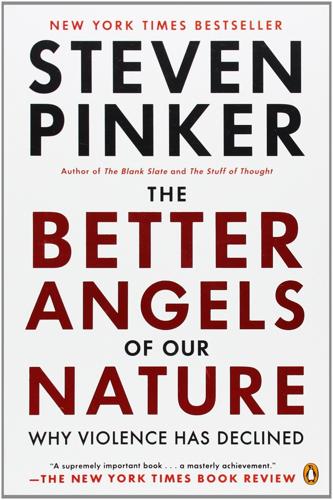
The Better Angels of Our Nature: Why Violence Has Declined
by
Steven Pinker
Published 24 Sep 2012
Some experts on nuclear strategy, including Schelling, John Deutch, and Harold Brown, are skeptical that a nuclear-free world is attainable or even desirable, though others are working out timetables and safeguards designed to answer their objections.217 With all these uncertainties, no one should predict that nuclear weapons will go the way of poison gas anytime soon. But it is a sign of the momentum behind the Long Peace that abolition can even be discussed as a foreseeable prospect. If it happens, it would represent the ultimate decline in violence. A nuclear-free world! What realist would have dreamed it? IS THE LONG PEACE A DEMOCRATIC PEACE? If the Long Peace is not the sturdy child of terror and the twin brother of annihilation, then whose child is it? Can we identify an exogenous variable—some development that is not part of the peace itself—that blossomed in the postwar years and that we have reason to believe is a generic force against war?
…
Several months later the fraction of recipients that got the lucky matching run will think he is a genius. A skeptic of the Long Peace could claim that anyone making a big deal of a long run of nonwars at the end of that very run is just as guilty of data snooping. But in fact there is a paper trail of scholars who, more than two decades ago, noticed that the war-free years were piling up and attributed it to a new mindset that they expected to last. Today we can say that their a priori predictions have been confirmed. The story can be told in titles and dates: Werner Levi’s The Coming End of War (1981), John Gaddis’s “The Long Peace: Elements of Stability in the Postwar International System” (1986), Kalevi Holsti’s “The Horsemen of the Apocalypse: At the Gate, Detoured, or Retreating?”
…
The balance of nuclear terror deterred them from starting a war that would escalate to a holocaust and put an end to civilization, if not human life itself.188 As Winston Churchill said in his last major speech to Parliament, “It may well be that we shall by a process of sublime irony have reached a stage in this story where safety will be the sturdy child of terror, and survival the twin brother of annihilation.” 189 In the same vein, the foreign policy analyst Kenneth Waltz has suggested that we “thank our nuclear blessings,” and Elspeth Rostow proposed that the nuclear bomb be awarded the Nobel Peace Prize.190 Let’s hope not. If the Long Peace were a nuclear peace, it would be a fool’s paradise, because an accident, a miscommunication, or an air force general obsessed with precious bodily fluids could set off an apocalypse. Thankfully, a closer look suggests that the threat of nuclear annihilation deserves little credit for the Long Peace.191 For one thing, weapons of mass destruction had never braked the march to war before. The benefactor of the Nobel Peace Prize wrote in the 1860s that his invention of dynamite would “sooner lead to peace than a thousand world conventions, [since] as soon as men will find that in one instant whole armies can be utterly destroyed, they will surely abide in golden peace.”192 Similar predictions have been made about submarines, artillery, smokeless powder, and the machine gun.193 The 1930s saw a widespread fear that poison gas dropped from airplanes could bring an end to civilization and human life, yet that dread did not come close to ending war either.194 As Luard puts it, “There is little evidence in history that the existence of supremely destructive weapons alone is capable of deterring war.

The Cold War: A New History
by
John Lewis Gaddis
Published 1 Jan 2005
Khrushchev, Khrushchev Remembers, translated and edited by Strobe Talbott (New York: Little, Brown, 1970), p. 411n. 47 John Lewis Gaddis, The Long Peace: Inquiries into the History of the Cold War (New York: Oxford University Press, 1987), pp. 158–59. 48 Pechatnov and Edmondson, “The Russian Perspective,” p. 139. 49 James V. Forrestal to Chan Gurney, December 8, 1947, in Walter Millis, ed., The Forrestal Diaries (New York: Viking, 1951), pp. 350–51. 50 Gaddis, The Long Peace, pp. 111–12. 51 PPS/39, “United States Policy Toward China,” September 7, 1948, FRUS: 1948, VIII, 148. 52 James Chace, Acheson: The Secretary of State Who Created the Modern World (New York: Simon & Schuster, 1998), p. 217. 53 Chen Jian, Mao’s China and the Cold War (Chapel Hill: University of North Carolina Press, 2001), p. 50. 54 Gaddis, We Now Know, pp. 58–66. 55 Marc Selverstone, “ ‘All Roads Lead to Moscow’: The United States, Great Britain, and the Communist Monolith,” Ph.D.
…
Dissertation, Ohio University History Department, 2000, p. 380. 56 Gaddis, We Now Know, pp. 66–67. 57 Ibid., p. 94. 58 David M. Oshinsky, A Conspiracy So Immense: The World of Joe McCarthy (New York: Free Press, 1983), pp. 108–9. 59 Gaddis, The Long Peace, p. 96. 60 Kathryn Weathersby, “Stalin and the Korean War,” in Leffler and Painter, eds., Origins of the Cold War, pp. 274–75. 61 Gaddis, We Now Know, pp. 66–70, 158–61. 62 Gaddis, The Long Peace, p. 97. 63 Montefiore, Stalin, p. 608. 64 Chen Jian, China’s Road to the Korean War: The Making of the Sino-American Confrontation (New York: Columbia University Press, 1994), p. 143. See also Shu Guang Zhang, Mao’s Military Romanticism: China and the Korean War, 1950–1953 (Lawrence: University Press of Kansas, 1995), pp. 55–86. 65 Gaddis, We Now Know, pp. 79–80. 66 Interview with Lt.
…
For the overall sequence of events, see Gaddis, We Now Know, pp. 103–10. 27 There is extensive information on Soviet military involvement in the Korean War at: http://www.korean-war.com/ussr.html. 28 Bird and Sherwin, American Prometheus, pp. 416–30; George F. Kennan, Memoirs: 1925–1950 (Boston: Atlantic-Little Brown, 1967), pp. 471–76. 29 Gaddis, The Long Peace, p. 113. See also Gaddis, We Now Know, pp. 230–32. 30 George Cowan and N. A. Vlasov, quoted in ibid., p. 224. 31 Andrew P. N. Erdmann, “ ‘War No Longer Has Any Logic Whatever’: Dwight D. Eisenhower and the Thermonuclear Revolution,” in Gaddis, et al., eds., Cold War Statesmen Confront the Bomb, p. 101. 32 Ibid. 33 Holloway, Stalin and the Bomb, pp. 336–37. 34 Gaddis, The Long Peace, p. 109. 35 Jonathan Rosenberg, “Before the Bomb and After: Winston Churchill and the Use of Force,” in Gaddis, et al., eds., Cold War Statesmen Confront the Bomb, p. 191. 36 James C.

The Glass Half-Empty: Debunking the Myth of Progress in the Twenty-First Century
by
Rodrigo Aguilera
Published 10 Mar 2020
The role of the nation-state is important when understanding the particularly peaceful period in human history that begins with the end of World War II, a period known as the “Long Peace”. During this period, conflict between the great powers became a rare occurrence so much that the only major instance is the US (and Allied) fight against a million-strong Chinese “volunteers” during the Korean War in 1950–1953. Pinker may downplay the predictive aspects of his narrative, but he nevertheless sees the Long Peace as something more than just a statistical oddity, so much that a large part of The Better Angels of Our Nature is spent trying to explain its uniqueness and how it is leading us to the “New Peace” we live in today.29 Two elements of this argument need to be disentangled.
…
Such a claim is laid on Pinker by statistician Nassim Taleb in a 2015 essay which pretends to show that there is nothing statistically anomalous about the post-1945 era,30 while another statistical study by computer scientist Aaron Clauset suggests that we need another 100–150 years of data to make a definitive claim that the Long Peace “could plausibly be called a genuine trend”.31 Laying the rates of conflict-related violence between the twentieth century next to those of the relatively peaceful fifteenth and sixteenth centuries (where there was lack of major continental-scale wars anywhere in the world) could have made anyone writing in the middle part of the millennium claim things had never been better (Figure 7.3). Figure 7.3: Is the Long Peace really that peaceful? Notes: This chart overlays the death rates in combat in the twentieth century with those of the relatively peaceful fourteenth and fifteenth centuries, where there was an absence of large-scale global or continental wars.
…
As one 2018 piece by political scientist Dan Altman (who also directly debunks Pinker’s claim of “zero” conquests since 197540) stated, “more than it declined, conquest evolved” so much that “although less war-prone than ever before, conquest attempts still occur frequently enough that territorial war remains the predominant type of interstate war”.41 Will the Long Peace endure for longer? In his response to Taleb,42 Pinker writes that “none of these phenomena proves that a war between developed states is less likely today than it was in the past”, and echoing the disclaimer on any financial report that “past performance is no guarantee of future results”. If this is the case, then any explanation of the Long Peace on the basis of Enlightenment ideals instead of great power dynamics is meaningless. When describing the distinctly American abhorrence of realism, international relations scholar (and leading exponent of offensive realism) John Mearsheimer explains in terms that seem to directly address the naive faith in liberal international institutions of the New Optimists: [R]ealism is a pessimistic theory.

Enlightenment Now: The Case for Reason, Science, Humanism, and Progress
by
Steven Pinker
Published 13 Feb 2018
The Civilizing Process was a fortyfold reduction in homicide and other violent crimes which followed upon the entrenchment of the rule of law and norms of self-control in early modern Europe. The Humanitarian Revolution is another name for the Enlightenment-era abolition of slavery, religious persecution, and cruel punishments. The Long Peace is the historians’ term for the decline of great-power and interstate war after World War II. Following the end of the Cold War, the world has enjoyed a New Peace with fewer civil wars, genocides, and autocracies. And since the 1950s the world has been swept by a cascade of Rights Revolutions: civil rights, women’s rights, gay rights, children’s rights, and animal rights.
…
But as their armies became better manned, trained, and armed, the wars that did take place became more lethal, culminating in the brief but stunningly destructive world wars. It was only after the second of these that all three measures of war—frequency, duration, and lethality—declined in tandem, and the world entered the period that has been called the Long Peace. It’s not just the great powers that have stopped fighting each other. War in the classic sense of an armed conflict between the uniformed armies of two nation-states appears to be obsolescent.5 There have been no more than three in any year since 1945, none in most years since 1989, and none since the American-led invasion of Iraq in 2003, the longest stretch without an interstate war since the end of World War II.6 Today, skirmishes between national armies kill dozens of people rather than the hundreds of thousands or millions who died in the all-out wars that nation-states have fought throughout history.
…
War in the classic sense of an armed conflict between the uniformed armies of two nation-states appears to be obsolescent.5 There have been no more than three in any year since 1945, none in most years since 1989, and none since the American-led invasion of Iraq in 2003, the longest stretch without an interstate war since the end of World War II.6 Today, skirmishes between national armies kill dozens of people rather than the hundreds of thousands or millions who died in the all-out wars that nation-states have fought throughout history. The Long Peace has certainly been tested since 2011, such as in conflicts between Armenia and Azerbaijan, Russia and Ukraine, and the two Koreas, but in each case the belligerents backed down rather than escalating into all-out war. This doesn’t, of course, mean that escalation to major war is impossible, just that it is considered extraordinary, something that nations try to avoid at (almost) all costs.

What We Owe the Future: A Million-Year View
by
William MacAskill
Published 31 Aug 2022
This is simply because of the sheer scale of destructiveness required to cause human extinction or other irrecoverable harms to future generations: an all-out war between the world’s largest and most technologically advanced militaries is more likely to exceed that grim threshold than more limited conflicts. Longtermists may thus be tempted to rejoice in the observation that soldiers from the great powers haven’t met in battle since the end of World War II. This “Long Peace” might suggest that great-power wars are a relic of the past, or at least much less likely today.60 Unfortunately, I don’t think we can take the Long Peace for granted. As I revise this chapter for publication, Russia’s invasion of Ukraine reminds us that war can all too quickly return to regions that have enjoyed peace for decades, and that initially more limited disputes can push the world’s largest nuclear powers dangerously close to the brink of a direct confrontation.
…
As I revise this chapter for publication, Russia’s invasion of Ukraine reminds us that war can all too quickly return to regions that have enjoyed peace for decades, and that initially more limited disputes can push the world’s largest nuclear powers dangerously close to the brink of a direct confrontation. And there are several reasons to think that the risk of great-power war in the next hundred years remains unacceptably high. First, it seems plausible that maintaining the Long Peace has involved a healthy dose of luck in addition to structural factors like economic growth and international cooperation. We know that the United States and the Soviet Union came close to war during the Cuban Missile Crisis, for example. But this was hardly the Cold War’s only moment of danger. Tensions were also high during the Berlin crises, the Suez Crisis, the 1973 Arab-Israeli war, multiple crises in the Taiwan Strait, and proxy wars in Korea and Vietnam, as well as on several occasions when early-warning systems failed and sent false alarms of incoming nuclear attacks.61 World War II has been characterized in part as hugely unlucky, due to Hitler’s unlikely rise.62 But the peace that followed has also been partly the result of chance.63 Second, changes in the distribution of global economic and military power may increase the risk of conflict.
…
In addition to asteroids, comets, and engineered pathogens, there are many other natural and anthropogenic extinction risks. These include supervolcanic eruptions, gamma ray bursts, nuclear war, and climate change. The extinction risk these threats pose is discussed at length by Ord (2020). I discuss the risks from nuclear war and climate change in Chapter 6. 60. The term “Long Peace” was first coined in 1986 by John Lewis Gaddis in an article that noted a systemic absence of war, not just an absence of great-power wars (Gaddis 1986). More recently, in The Better Angels of Our Nature, psychologist Steven Pinker argued that there has been a longterm decline in war, especially since World War II, as part of a general civilisational decline in violence of all kinds (Pinker 2011).

Destined for War: America, China, and Thucydides's Trap
by
Graham Allison
Published 29 May 2017
This is not a book about China. It is about the impact of a rising China on the US and the global order. For seven decades since World War II, a rules-based framework led by Washington has defined world order, producing an era without war among great powers. Most people now think of this as normal. Historians call it a rare “Long Peace.” Today, an increasingly powerful China is unraveling this order, throwing into question the peace generations have taken for granted. In 2015, the Atlantic published “The Thucydides Trap: Are the US and China headed for War?” In that essay I argued that this historical metaphor provides the best lens available for illuminating relations between China and the US today.
…
As Thucydides explains in the introduction to his work, the purpose of his chronicle is to help future statesmen, soldiers, and citizens understand war so that they can avoid mistakes made by their predecessors: “If my history be judged useful by those who desire an exact knowledge of the past as an aid to understanding the future—which in the course of human affairs must resemble if it does not reflect it—I shall be content.”2 As the original “applied historian,” he shared the view later captured by Winston Churchill’s quip: “The longer you can look back, the farther you can look forward.” From Thucydides, my second-year classmates and I learned about the long peace that preceded the great war between Athens and Sparta. We read about Athens’s precious experiment in democracy and its unprecedented surge of creative achievement in every field. These ancient Greeks essentially invented philosophy, drama, architecture, sculpture, history, naval warfare, and more; what they did not create themselves, they took to heights never seen before in human history.
…
A subtle but concentrated effort to accentuate the contradictions at the core of Chinese Communist ideology and the Party’s attempt to exert authoritarian control over citizens’ increasing demands for freedom could, over time, undermine the regime and encourage independence movements in Taiwan, Xinjiang, Tibet, and Hong Kong. By splintering China at home and keeping Beijing embroiled in maintaining domestic stability, the US could avert, or at least substantially delay, China’s challenge to American dominance. Negotiate a Long Peace If it were negotiable, the US and China could agree to take a quarter-century hiatus that imposes considerable constraints in some areas of their competition, leaving both parties free to pursue advantage elsewhere. From the Thirty Years’ Peace that Pericles signed with the Spartans in 445 BCE to the US-Soviet détente in the 1970s, rivals throughout history have found ways to accept intolerable (but temporally unchangeable) circumstances in order to focus on more urgent priorities, particularly their own domestic affairs.
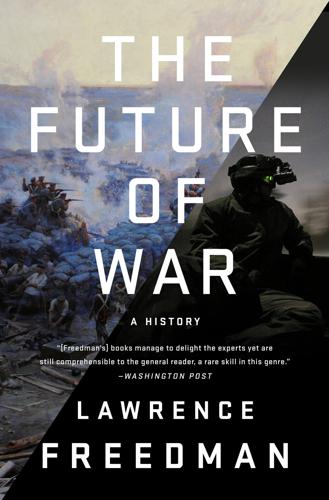
The Future of War
by
Lawrence Freedman
Published 9 Oct 2017
Without much difficulty, they looked into the likely character of a future war and decided that this was not one they could survive. Observing this in 1985, the historian John Gaddis coined the term ‘the Long Peace’ to describe the years since 1945. This was a period in which millions had died in violent conflicts. The great powers were often involved, but there was comfort to be drawn in the absence of war directly between them.2 Perhaps by reaching such horrific peaks of destructiveness, great-power war had almost abolished itself. Optimism on this score grew in the 1990s after the end of the Cold War. The Long Peace continued, leading to speculation that perhaps humankind had learnt something about war. The historian John Keegan wondered whether: ‘War… may well be ceasing to commend itself to human beings as a desirable or productive, let alone rational, means of reconciling their discontents.’3 The political scientist John Mueller had long taken a similar view: ‘like duelling and slavery, war does not appear to be one of life’s necessities’.
…
Berlin, 1–2 Feb. 2010, pp. 1 and 18–21. Available: http://www.diw.de/sixcms/detail. php?id=diw_01.c.338475.en. NOTES INTRODUCTION 1. Margaret Atwood, Morning in the Burned House. (New York: Houghton Mifflin, 1995). 2. John Gaddis, The Long Peace: Inquiries Into the History of the Cold War (London: Oxford University Press, 1989). This first appeared as ‘The Long Peace: Elements of Stability in the Postwar International System’, International Security 10.4 (1986). 3. John Keegan, A History of Warfare (New York: Knopf, 1993) 59. 4. John Mueller, Retreat from Doomsday: The Obsolescence of Major War (New York: Basic Books, 1989) 13. 5.
…
New York: Free Press, 1992. . State-Building: Governance and World Order in the 21st Century. Ithaca, NY: Cornell University Press, 2004. Fuller, J. F. C. The Decisive Battles of the Western World and Their Influence Upon History. Vol. 1–3. London: Eyre & Spotiswood, 1963. Gaddis, John Lewis. The Long Peace: Inquiries into the History of the Cold War. London: Oxford University Press, 1989. . ‘International Relations Theory and the End of the Cold War’. International Security 17.3 (1992/93): 5–58. . The Cold War. London: Penguin, 2007. Gagnon, V. P. ‘Ethnic Nationalism and International Conflict’.
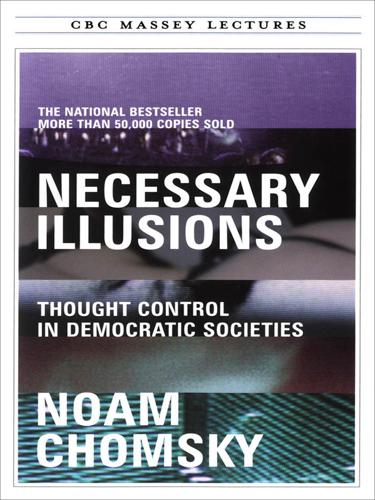
Necessary Illusions
by
Noam Chomsky
Published 1 Sep 1995
John Lewis Gaddis, Strategies of Containment (New York, 1982, viiin), his emphasis; The Long Peace, 43. 3. Wm. Roger Lewis, Imperialism at Bay: the United States and the Decolonization of the British Empire, 1941-1945 (Oxford, 1978, 481). On Grand Area planning, see Shoup and Minter, Imperial Brain Trust. For remarks on this and competing models, and applications in the Far East, see Bruce Cumings, introduction, in Cumings, ed., Child of Conflict (Washington, 1983). 4. Lewis, op. cit., 550; Christopher Thome, The Issue of War (Oxford, 1985, 225, 211). 5. Gaddis, The Long Peace, 10-11, 21; Andy Thomas, Effects of Chemical Warfare (SIPRI, Taylor & Francis, 1985, 33f.), reviewing newly released British state archives. 6.
…
Thomas Paterson, Meeting the Communist Threat (Oxford, 1988, 82-83), quoting a Truman official and political scientist Gabriel Almond. 6. Melvyn Leffler, “Adherence to Agreements: Yalta and the Experiences of the Early Cold War,” International Security, Summer 1986. 7. Robert W. Tucker, “Reagan’s Foreign Policy,” Foreign Affairs, “America and the World 1988/89,” Winter 1989, featured lead article. John Lewis Gaddis, The Long Peace (Oxford, 1987, 129). The effort to liberate Indochina from the U.S.-backed French forces was in part a civil war, as is generally true of struggles against foreign occupation and colonial rule—the American revolution, for example. It should be clear that this fact adds no credibility to the bizarre notion that the U.S. was “deterring aggression” by aiding the French effort to reconquer Indochina, even contemplating the use of nuclear weapons for this purpose. 8.
…
Gaddis, The Long Peace, 10-11, 21; Andy Thomas, Effects of Chemical Warfare (SIPRI, Taylor & Francis, 1985, 33f.), reviewing newly released British state archives. 6. Gaddis, The Long Peace, 37, 11. 7. In earlier years, military spending was selected as the major device to overcome the “dollar gap” of the U.S. allies and to ensure that they would remain securely within the U.S.-dominated world system, after the failure of aid programs to achieve their ends. See Borden, Pacific Alliance, for extensive discussion of these themes, which were given their first comprehensive analysis by Joyce and Gabriel Kolko, The Limits of Power (Harper & Row, 1972). 8. A closer examination shows that the figures were misrepresented to exaggerate the impression of Soviet military expenditures and Western weakness, also a familiar pattern over the years. 9.
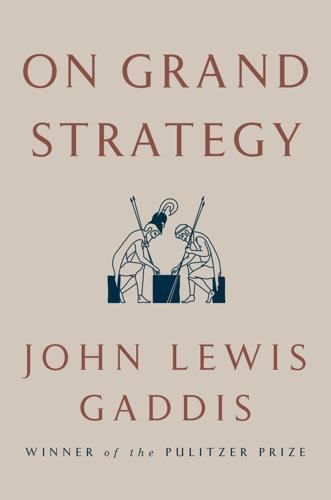
On Grand Strategy
by
John Lewis Gaddis
Published 3 Apr 2018
Kennan: An American Life The Cold War: A New History Surprise, Security, and the American Experience The Landscape of History: How Historians Map the Past We Now Know: Rethinking Cold War History The United States and the End of the Cold War: Implications, Reconsiderations, Provocations The Long Peace: Inquiries into the History of the Cold War Strategies of Containment: A Critical Appraisal of American National Security Policy During the Cold War Russia, the Soviet Union and the United States: An Interpretive History The United States and the Origins of the Cold War, 1941–1947 PENGUIN PRESS An imprint of Penguin Random House LLC 375 Hudson Street New York, New York 10014 penguin.com Copyright © 2018 by John Lewis Gaddis Penguin supports copyright.
…
The Athenians executed the ringleaders of the revolt, pulled down the walls of the city, seized its ships, and expropriated property. This was far less, though, than what Cleon demanded. 44. Ibid., 5:84–116, pp. 350–57. 45. Ibid., 3:82, p. 199. 46. For more on this, see John Lewis Gaddis, “Drawing Lines: The Defensive Perimeter Strategy in East Asia, 1947–1951,” in Gaddis, The Long Peace: Inquiries into the History of the Cold War (New York: Oxford University Press, 1987), pp. 71–103. Taiwan was not included, because the Chinese Nationalists had fled there. Defending them, the administration feared, would be seen as intervention in the Chinese civil war, which it had hoped to avoid. 47.
…
N., 147, 148 Wilson, Woodrow, 116, 286, 298–99, 309 as failing to align means with ends, 271 “Fourteen Points” of, 271, 274, 275, 305 as hedgehog, 289–90 League of Nations and, 274, 275 neutrality policy of, 267–70 “Peace Without Victory” speech of, 273 Russian Revolution and, 272 Wood, Gordon, 167 Woolf, Virginia, 122, 129 World War I, 256, 276 capabilities as outrunning intentions in, 263–64, 273 outbreak of, 263, 273 U-boat attacks in, 268–69, 270 U.S. and, 266–67, 281–82 World War II, 180–81, 305 German Blitzkrieg in, 284 outbreak of, 283–84 U.S. and, 267–68, 287–89, 291–93, 297–302 Xerxes, king of Persia, 1–2, 35, 44, 58, 65, 309 as failing to align means with ends, 204, 215 Greek invasion of, 1–3, 6–8, 10–14, 24, 25, 30 as hedgehog, 6–8, 10, 12–14, 19, 20, 215 Yale University, author’s strategy seminar at, 61–62 Year of Decision, The: 1846 (DeVoto), 291 Yorktown, battle of (1781), 166 ABOUT THE AUTHOR JOHN LEWIS GADDIS is the Robert A. Lovett Professor of History at Yale University and was the founding director of the Brady-Johnson Program in Grand Strategy. His previous books include The United States and the Origins of the Cold War; Strategies of Containment; The Long Peace; We Now Know; The Landscape of History; Surprise, Security, and the American Experience; and The Cold War: A New History. Professor Gaddis teaches courses on Cold War history, grand strategy, biography, and historical methodology. He has won two undergraduate teaching awards at Yale and was a 2005 recipient of the National Humanities Medal.
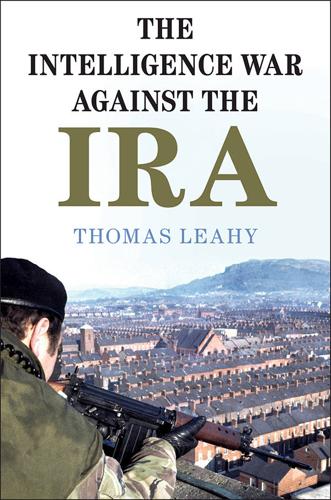
The Intelligence War Against the IRA
by
Thomas Leahy
Published 26 Mar 2020
John Hume, Personal Views: Politics, Peace and Reconciliation in Ireland (Dublin: Town House, 1996), p. 109; see similar comments by Sean Farren, ‘The SDLP and the Roots of the Good Friday Agreement’, in Michael Cox, Adrian Guelke and Fiona Stephen (eds.), A Farewell to Arms? From ‘Long War’ to Long Peace in Northern Ireland (Manchester: Manchester University Press, 2000), p. 52. 13. Martin Mansergh, ‘The Background to the Irish Peace Process’, in Cox, Guelke and Stephen (eds.), A Farewell to Arms?, pp. 12–14. 14. Albert Reynolds with Jill Arlon, My Autobiography (London: Transworld Ireland, 2009), pp. 215, 236, 280. 15.
…
The British Army in Northern Ireland (London: Weidenfeld Military, 1997). Donoughue, Bernard. Downing Street Diary: With Harold Wilson in No. 10 (London: Jonathan Cape, 2005). Farren, Sean. ‘The SDLP and the Roots of the Good Friday Agreement’, in Michael Cox, Adrian Guelke and Fiona Stephen (eds.), A Farewell to Arms? From ‘Long War’ to Long Peace in Northern Ireland (Manchester: Manchester University Press, 2000). Fulton, Kevin with Nally, Jim and Gallagher, Ian. Unsung Hero: How I Saved Dozens of Lives as a Secret Agent Inside the IRA (London: John Blake Publishing, 2008). Geraghty, Tony. The Irish War (London: HarperCollins Publishers, 2000).
…
MacStiofáin, Seán. Memoirs of a Revolutionary (Edinburgh: Gordon and Cremonesi, 1975). Major, John. The Autobiography (London: HarperCollins, 1999). Mansergh, Martin. ‘The Background to the Irish Peace Process’, in Michael Cox, Adrian Guelke and Fiona Stephen (eds.), A Farewell to Arms? From ‘Long War’ to Long Peace in Northern Ireland (Manchester: Manchester University Press, 2000). Mansergh, Martin. ‘Mountain-Climbing Irish-Style: The HiddenChallenges of the Peace Process’, in Marianne Elliott (ed.), The Long Road to Peace in Northern Ireland (Liverpool: Liverpool University Press, 2002). Matchett, William.
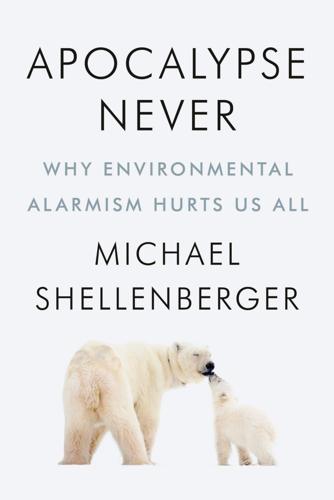
Apocalypse Never: Why Environmental Alarmism Hurts Us All
by
Michael Shellenberger
Published 28 Jun 2020
Chernobyl, episode 5, “Vichnaya Pamyat,” directed by Johan Renck, HBO, June 3, 2019. 121. Michael Dobbs, One Minute to Midnight: Kennedy, Khrushchev, and Castro on the Brink of Nuclear War (New York: Vintage Books, 2009), 312. 122. Ibid., 344. 123. John Lewis Gaddis, The Long Peace: Inquiries into the History of the Cold War (New York: Oxford University Press, 1987), 230. Gaddis first published his speech as a 1986 journal article, “The Long Peace: Elements of Stability in the Postwar International System,” International Security, Spring 1986, 99–142. 124. Our World in Data, “Battle Related Deaths in State-Based Conflicts Since 1946,” Our World in Data, https://ourworldindata.org/grapher/battle-related-deaths-in-state-based-conflicts-since-1946-by-world-region. 125.
…
“It seems inescapable that what has really made the difference in inducing this unaccustomed caution,” he said in 1986 speech, “has been the workings of the nuclear deterrent.”123 The intensity and scale of major wars had risen in fits and starts for 500 years from the wide-scale introduction of firearms and artillery in the 1400s, until the death toll from battles and wars peaked in World War II at tens of millions of military and civilian deaths. And then from a post-war peak of more than 500,000 deaths in 1950, battle deaths in 2016 were 84 percent lower despite a tripling in the world population.124 Even if one gives no credit to nuclear weapons for the “Long Peace,” it must be acknowledged that the apocalyptic fears about nuclear have been unrealized, and that we are further from global nuclear war now than at any other point in the last seventy-five years since the invention and use of the bomb. After the Cold War, many experts in the West feared nuclear war between India and Pakistan.
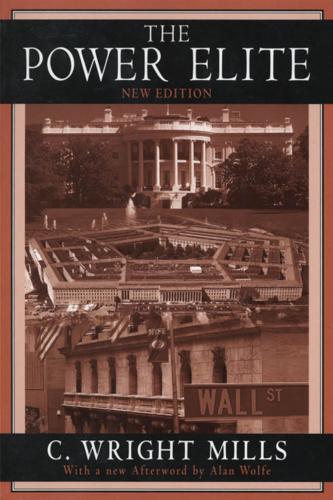
The Power Elite
by
C. Wright Mills
and
Alan Wolfe
Published 1 Jan 1956
At various times and places, of course, military men had been the servants of civilian decision, but this trend—which reached its climax in the nineteenth century and lasted until World War I—seemed then, and still seems, remarkable simply because it had never before happened on such a scale or never before seemed so firmly grounded. In the twentieth century, among the industrialized nations of the world, the great, brief, precarious fact of civilian dominance began to falter; and now—after the long peace from the Napoleonic era to World War I—the old march of world history once more asserts itself. All over the world, the warlord is returning. All over the world, reality is defined in his terms. And in America, too, into the political vacuum the warlords have marched. Alongside the corporate executives and the politicians, the generals and admirals—those uneasy cousins within the American elite—have gained and have been given increased power to make and to influence decisions of the gravest consequence. 1 All politics is a struggle for power; the ultimate kind of power is violence.
…
Even if the ultimate form of power is coercion by violence, all power contests within and between nations of our tradition have not reached the ultimate point. Our theories of government have assumed and our constitution has led to institutions in which violence has been minimized and subjected to efficient checks in the balance of civilian dominance. During the long peace of the modern west, history has been referred more to the politician, to the rich and to the lawyer than to the general, the bandit, and the admiral. But how did that peace come about? How did civilians rather than men of violence become dominant? In his discusion of the military, Gaetano Mosca1 makes an assumption which we do not share, but which does not disturb our acceptance of his general line of reasoning.
…
Accordingly, at the top of this structure, the power elite has been shaped by the coincidence of interest between those who control the major means of production and those who control the newly enlarged means of violence; from the decline of the professional politician and the rise to explicit political command of the corporate chieftains and the professional warlords; from the absence of any genuine civil service of skill and integrity, independent of vested interests. The power elite is composed of political, economic, and military men, but this instituted elite is frequently in some tension: it comes together only on certain coinciding points and only on certain occasions of ‘crisis.’ In the long peace of the nineteenth century, the military were not in the high councils of state, not of the political directorate, and neither were the economic men—they made raids upon the state but they did not join its directorate. During the ‘thirties, the political man was ascendant. Now the military and the corporate men are in top positions.
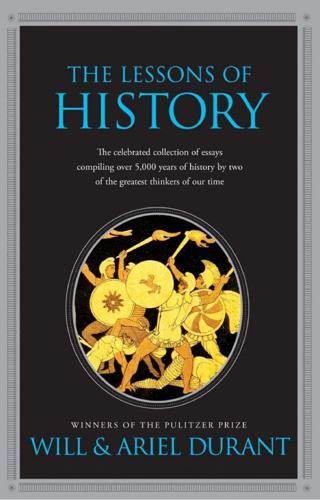
The Lessons of History
by
Will Durant
and
Ariel Durant
Published 1 Jan 1968
It is pitiful (says the general) that so many young men die in battle, but more of them die in automobile accidents than in war, and many of them riot and rot for lack of discipline; they need an outlet for their combativeness, their adventurousness, their weariness with prosaic routine; if they must die sooner or later why not let them die for their country in the anesthesia of battle and the aura of glory? Even a philosopher, if he knows history, will admit that a long peace may fatally weaken the martial muscles of a nation. In the present inadequacy of international law and sentiment a nation must be ready at any moment to defend itself; and when its essential interests are involved it must be allowed to use any means it considers necessary to its survival. The Ten Commandments must be silent when self-preservation is at stake.
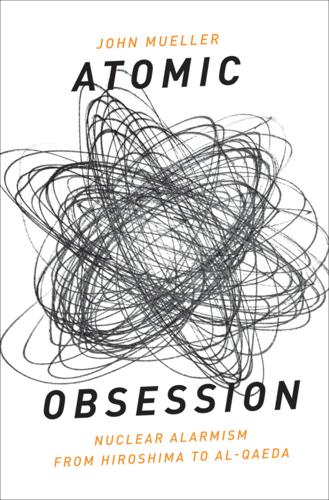
Atomic Obsession: Nuclear Alarmism From Hiroshima to Al-Qaeda
by
John Mueller
Published 1 Nov 2009
Fursenko, Aleksandr, and Timothy Naftali. 2006. Khrushchev’s Cold War: The Inside Story of an American Adversary. New York: Norton. Gaddis, John Lewis. 1974. “Was the Truman Doctrine a Real Turning Point?” Foreign Affairs 52(2) January: 386–401. ______. 1982. Strategies of Containment. New York: Oxford University Press. ______. 1987. The Long Peace: Inquiries Into the History of the Cold War. New York: Oxford University Press. ______. 1992. The United States and the Cold War: Implications, Reconsiderations, Provocations. New York: Oxford University Press. ______. 1997. We Now Know: Rethinking Cold War History. New York: Oxford University Press. ______. 1999.
…
Schlesinger, James. 1967. On Relating Non-Technical Elements to Systems Studies. Santa Monica, CA: RAND Corporation, P-3545 (February). Schneier, Bruce. 2003. Beyond Fear: Thinking Sensibly About Security in an Uncertain World. New York: Copernicus. Schroeder, Paul W. 2006. “The Life and Death of a Long Peace, 1763–1914.” In The Waning of Major War: Theories and Debates, ed. Raimo Väyryen. New York: Routledge, 33–63. Schuman, Howard, Jacob Ludwig, and Jon A. Krosnick. 1986. “The Perceived Threat of Nuclear War, Salience, and Open Questions.” Public Opinion Quarterly 50(4) Winter: 519–36. Seitz, Russell. 2004.
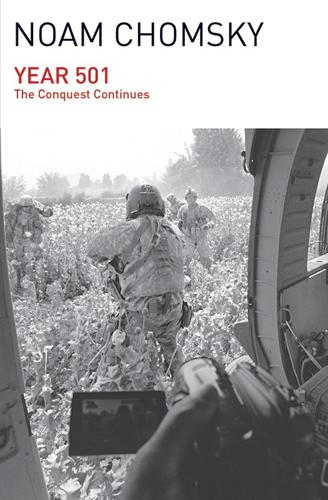
Year 501
by
Noam Chomsky
Published 19 Jan 2016
Brenner, in Aston and Philpin, Brenner Debate, 277ff., 40ff. Stavrianos, Global Rift, cbs. 3, 16; Feffer, Shock Waves, 22; Shanin, Russia (quoting historian D. Mirsky). Zeman, Communist Europe, 15-16 (citing T. Masaryk), 57-8. Gerschenkron, Economic Backwardness. 2. Leffler, Preponderance, 359. Gaddis, Long Peace, 10. 3. Gerschenkron, Economic Backwardness, 146, 150. Du Boff, Accumulation, 176, citing Kuznets. 4. See FRS, 51-2, for details on Indochina. Wood, 177, on Guatemala; US and Fascism-Nazism, Mexico, DD, chs. 1.3-4, 11. Sklar, Washington’s War, and a substantial further literature on Nicaragua. 5.
…
Shock Waves: Eastern Europe After the Revolution (South End, 1992) Fitzgerald, Tom. Between Life and Economics (1990 Boyer lectures of the Australian Broadcasting Company, ABC, 1990) Franklin, Bruce. M.I.A., or Mythmaking in America (Lawrence Hill, 1992) Gaddis, John Lewis. Strategies of Containment (Oxford, 1982) —The Long Peace (Oxford, 1987) Garthoff, Raymond. Détente and Confrontation (Brookings, 1985) —Reflections on the Cuban Missile Crisis (Brookings, 1987) George, Alexander, ed. Westem State Terrorism (Polity, 1991) Gerschenkron, Alexander. Economic Backwardness in Historical Perspective (Harvard, 1962) Ginger, Ann Pagan, and David Christiano, eds.
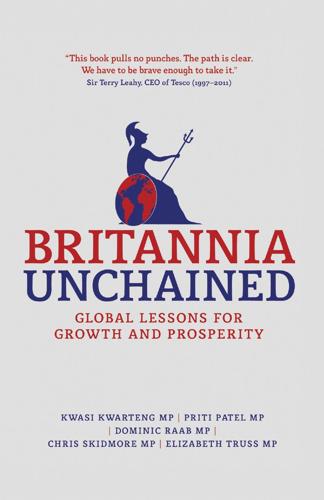
Britannia Unchained: Global Lessons for Growth and Prosperity
by
Kwasi Kwarteng
,
Priti Patel
,
Dominic Raab
,
Chris Skidmore
and
Elizabeth Truss
Published 12 Sep 2012
Ever since its first creation in the late seventeenth century, the British debt has followed a simple pattern. It has spiked dramatically with every war, and then gradually been paid back down in the years of peace that followed. By the end of the Napoleonic wars debt had peaked at 268 per cent of GDP.36 The long peace that followed gave Britain enough room to pay down the debt, until by 1914 it was only 26 per cent of GDP.37 The two world wars took debt back up to 250 per cent of GDP. This was once again paid down, until in 2001 debt stood at 29.7 per cent of GDP. Even after the financial crisis, the UK’s debt is expected to peak at no more than around 80 per cent of GDP in 2015.38 A Tale of Two Nations 21 The trajectory of the debt seems to bear little relationship to the short-term deficit.

Winning the War on War: The Decline of Armed Conflict Worldwide
by
Joshua S. Goldstein
Published 15 Sep 2011
“The Group of Friends of the Secretary-General: A Useful Leveraging Tool.” In Jean Krasno, Bradd C. Hayes, and Donald C. F. Daniel. Leveraging for Success in United Nations Peace Operations. Westport, Conn.: Praeger, 2003b: 171–200. Krech, Shepard III. “Genocide in Tribal Society.” Nature 371, Sep. 1, 1994: 14–15. Kriesberg, Louis. “Long Peace or Long War: A Conflict Resolution Perspective.” Negotiation Journal, April 2007: 97–116. Krippner, Stanley, and Teresa M. McIntyre. “Overview: In the Wake of War.” In Stanley Krippner and Teresa M. McIntyre, eds. The Psychological Impact of War Trauma on Civilians: An International Perspective.
…
State of the World’s Mothers 2003: Protecting Women and Children in War and Conflict. Westport, Conn.: Save the Children, 2003a. Save the Children. U.S. Congress Should Put Women and Children First in Setting Priorities for Humanitarian Assistance in War Zones. [Press Release.] October 14, 2003b. Schroeder, Paul W. The Life and Death of a Long Peace, 1763–1914. In Raimo Väyrynen, ed. The Waning of Major War: Theories and Debates. London: Routledge, 2006: 33–63. Seybolt, Taylor B. Humanitarian Military Intervention: The Conditions for Success and Failure. Oxford: Oxford University Press, 2007. Shanker, Thom. “Gates Warns Against Wars Like Iraq and Afghanistan.”
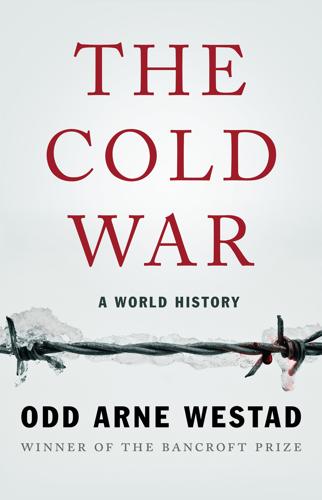
The Cold War: A World History
by
Odd Arne Westad
Published 4 Sep 2017
He is the author or editor of eleven books, including Restless Empire and The Global Cold War, which won the Bancroft Prize, the Harrington Award, and the Akira Iriye International History Award. Westad lives in Cambridge, Massachusetts. Notes WORLD MAKING 1. See for instance John Lewis Gaddis, The Long Peace: Inquiries into the History of the Cold War (New York: Oxford University Press, 1987). Although I agree with many of Gaddis’s points about what kept superpower war from breaking out, I strongly disagree with the “long peace” designation. 2. Odd Arne Westad, The Global Cold War: Third World Interventions and the Making of Our Times (Cambridge: Cambridge University Press, 2005). 3. Marx/Engels Selected Works (Moscow: Progress, 1969), 1:26. 4.
…
The very fact that the Cold War confrontation between the Superpowers ended peacefully was of course of supreme importance: With enough nuclear weapons in existence to destroy the world several times over, we all depended on moderation and wisdom to avoid an atomic Armageddon. The Cold War may not have been the long peace that some historians have seen it as being.1 But at the upper levels of the international system—between the United States and the Soviet Union—war was avoided long enough for change to take place. We all depended on that long postponement for survival. HOW SPECIAL, THEN, was the Cold War as an international system compared with other such systems in history?

The end of history and the last man
by
Francis Fukuyama
Published 28 Feb 2006
The root cause for the secular decline of slavery, dueling, and war is the same, i.e., the advent of rational recognition. 14 Many of these general points are made by Carl Kaysen in his excellent review essay of John Mueller, “Is War Obsolete?” International Security 14, no. 4 (Spring 1990): 42-64. 15 See for example John Gaddis, “The Long Peace: Elements of Stability in the Postwar International System,” International Security 10, no. 4 (Spring 1986): 99-142. 16 Of course, nuclear weapons were themselves responsible for the most serious U.S.-Soviet confrontation of the Cold war, the Cuban missile crisis, but even here the prospect of nuclear war prevented the conflict from moving to actual armed conflict. 17 See for example Dean V.
…
Harvard Theological Review 21: 163-191. Furtado, Celso. 1970. Economic Development of Latin America: A Survey from Colonial Times to the Cuban Revolution. Cambridge University Press, Cambridge. Fussell, Paul. 1975. The Great War and Modern Memory. Oxford University Press, New York. Gaddis, John Lewis. 1986. “The Long Peace: Elements of Stability in the Postwar International Situation.” International Security 10, no. 4 (Spring): 99-142. Galston, William. 1975. Kant and the Problem of History. University of Chicago Press, Chicago. Gellner, David. 1982. “Max Weber: Capitalism and the Religion of India.” Sociology 16, no. 4 (November): 526-543.
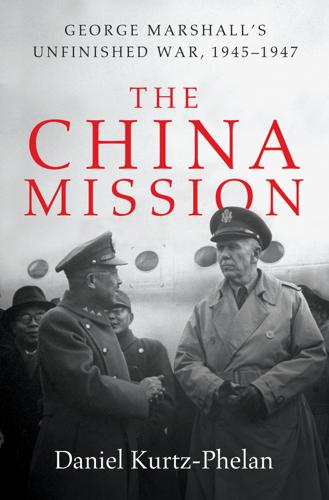
The China Mission: George Marshall's Unfinished War, 1945-1947
by
Daniel Kurtz-Phelan
Published 9 Apr 2018
Mao was equally grand: “The entire people of our country should feel grateful and loudly shout, ‘long live cooperation between China and the United States.’ ” The afternoon before, searching for this airstrip, Marshall’s pilot had gotten lost in a tangle of gullies where a wrong turn could end against the side of a mountain. The remoteness was not incidental. Mao’s Communists had come to this “mountain fastness,” as Marshall described it, to take refuge and rebuild after the Long March. Most came to know the place as the “cradle of revolution,” but its name, Yenan, meant “long peace.” Marshall’s arrival in Yenan was to have signaled that the Communists’ time in the wilderness was over. When the plane landed, its pilot spotting the 1,000-year-old pagoda that marked a hill above town, a large crowd was waiting, 6,000 people by the count of Yenan’s Emancipation Daily, summoned by Mao.
…
General Marshall, We Communists Honor You 1 “I can tell” Forrest C. Pogue, George C. Marshall: Statesman, 102; “The entire people” Li Tien-Min, Chou En-Lai, 261–262. 1–2 lost Gillem diary, 4 March 1946, Alvan Gillem Papers, MHI; side of a mountain Memoirs of Ivan D. Yeaton, 120, Ivan D. Yeaton Papers 1, Hoover; “long peace” Alexander V. Pantsov, Mao, 305. 2 6,000 people Emancipation Daily 5 March 1946. 2 five hundred Emancipation Daily 5 March 1946; “Oh! General Marshall” Li, Chou, 261–262. 2 “sits and masks” Gillem diary, 4 March 1946, Alvan Gillem Papers, MHI; “All were satisfied” Emancipation Daily 5 March 1946; He had sat Gillem diary, 4 March 1946, Alvan Gillem Papers, MHI; fail to notice Transcript of GCM comments, Conference on Problems of United States Policy in China, Secretary’s Files 152/4, HST Papers, HSTL; model of vehicle Katherine Marshall, Together, 60; Mao would ride JHC letter, 23 March 1946, JHC Papers 2/8, GCMRL. 3 “armies called” Ed Cray, General of the Army, 515. 3 “strong, united” FRUS 1945 Vol. 7, 770. 3 a miracle Marshall cable, 25 January 1946, GCM Papers 24/1, GCMRL; Benjamin Franklin New Yorker 16 March 1946; “a new stage” Odd Arne Westad, Decisive Encounters, 32. 4 “god of peace” Marshall cable, 25 January 1946, GCM Papers 24/1, GCMRL; “peace will” GCM to HST, 16 January 146, Naval Aide Files 8/9, HST Papers, HSTL. 5 “next war” Papers Vol. 5, 273. 1.
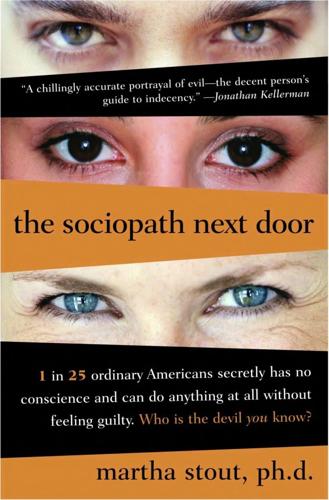
The Sociopath Next Door
by
Martha Stout
Published 8 Feb 2005
We are overwhelmingly relational creatures, and this is true all the way back to our primate ancestors. Jane Goodall says the chimpanzees she observed in Gombe “have a rich repertoire of behaviours that serve to maintain or restore social harmony. . . . The embracing, kissing, patting and holding of hands that serve as greetings after separation . . . The long, peaceful sessions of relaxed social grooming. The sharing of food. The concern for the sick or wounded.” And so without our primordial attachments to others, what would we be? Evidently, we would be the players of a game, one that resembled a giant chess match, with our fellow human beings as the rooks, the knights, and the pawns.

Financial Market Meltdown: Everything You Need to Know to Understand and Survive the Global Credit Crisis
by
Kevin Mellyn
Published 30 Sep 2009
Baring Brothers raised the money for Jefferson to buy Louisiana from Napoleon and helped finance Latin American independence. Later the Rothschilds advanced the money for Britain to buy the Suez Canal. The great London merchant bankers also financed the huge expansion of world trade and the building of railroads and factories around the globe that marked the long peace of 1815 through 1914. The number one destination for all this London money was the United States, not Britain or her empire. America was growing in territory, population, and industry at breakneck speed. It had a bottomless appetite for credit and money. What it didn’t have, for reasons we will address in the next chapter, was serious banks or financial markets.
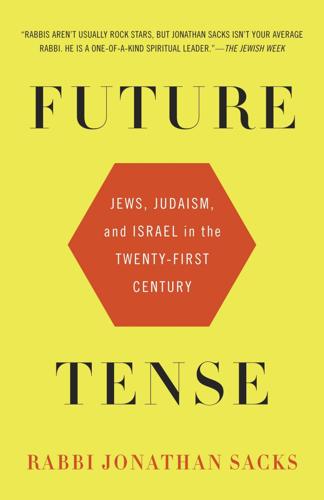
Future Tense: Jews, Judaism, and Israel in the Twenty-First Century
by
Jonathan Sacks
Published 19 Apr 2010
This told the story of a people that once made history as a nation in its land, then disappeared from history, living in suspended animation for two thousand years, before coming to life again in the twentieth century. In the 1960s, after the Eichmann trial brought the Holocaust into Israeli discourse, came the story of Shoa u-Gevurah, destruction and rebirth. As Israel began the long peace process of Oslo, yet another voice began to be heard, that of post-Zionism, meaning an Israel without Jewish identity, a liberal democracy with procedures but no traditions. The one voice that might have supplied an enduring narrative, Judaism itself, was more or less ruled out in principle, because Judaism is a religion, and Israel is a secular state.

Enshittification: Why Everything Suddenly Got Worse and What to Do About It
by
Cory Doctorow
Published 6 Oct 2025
The era before the NLRB was a time when bosses scurried from their mansions to their fancy restaurants to their opera boxes surrounded by armed guards. It was a time of bombings, arson, and firefights. The aphorism “War is politics by other means” (a loose translation of the military theorist Carl von Clausewitz’s words) has a corollary: Politics is war by other means. The labor wars were turned into a long peace thanks to the NLRB. Now it’s war. Again. We did this in living memory, right around the time we came up with antitrust law and smashed the empires of the likes of John D. Rockefeller. It’s no coincidence that these two accomplishments happened in parallel. Both unions and trustbusting are examples of working people using democratic means to rein in the undemocratic, autocratic power of corporations and the ultrarich.

The Internationalists: How a Radical Plan to Outlaw War Remade the World
by
Oona A. Hathaway
and
Scott J. Shapiro
Published 11 Sep 2017
Raimo Vayrynen (London: Routledge, 2006); Nils Petter Gelditsch, “The Decline of War—The Main Issues,” International Studies Review 15, no. 3 (2013): 397–99; Lawrence Freedman, “Steven Pinker and the Long Peace: Alliance, Deterrence, and Decline,” Cold War History 14, no. 4 (2014): 657–72; John Mueller, Retreat from Doomsday: The Obsolescence of Major War (New York: Basic Books, 1989). 32. Mueller, Retreat from Doomsday, 3. 33. Freedman, “Steven Pinker and the Long Peace,” 658. 34. Ibid. 35. One of the frequently used datasets, Peter Brecke’s “Conflict Catalog,” http://www.cgeh.nl/data, includes 3,708 conflicts, with data on parties, fatalities, date, and duration.

Hegemony or Survival: America's Quest for Global Dominance
by
Noam Chomsky
Published 1 Jan 2003
Alan Tonelson, New York Times Book Review, 25 December 1988. 36. Lansing and Wilson cited in Lloyd Gardner, Safe for Democracy (Oxford, 1987). Alex Carey, Taking the Risk Out of Democracy (University of Illinois, 1997). 37. Cited by Melvin Leffler, A Preponderance of Power (Stanford, 1992), p. 78. 38. John Lewis Gaddis, The Long Peace (Oxford, 1987), p. 10. 39. Mark Laffey, Review of International Studies 29 (2003), a critical account of the convention. Chapter 4: DANGEROUS TIMES 1. Michael Krepon, strategic analyst at the Henry L. Stimson Center, cited by Faye Bowers and Howard LaFranchi, Christian Science Monitor, 31 December 2002.
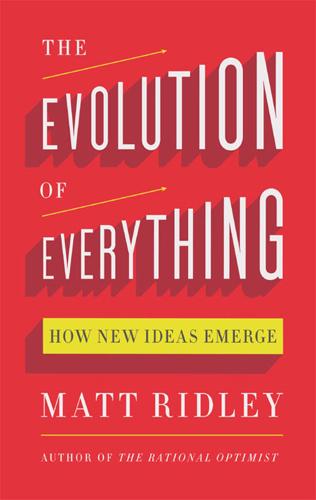
The Evolution of Everything: How New Ideas Emerge
by
Matt Ridley
Montesquieu’s phrase for the calming effect of trade on human violence, intolerance and enmity was ‘doux commerce’ – sweet commerce. And he has been amply vindicated in the centuries since. The richer and more market-oriented societies have become, the nicer people have behaved. Think of the Dutch after 1600, the Swedes after 1800, the Japanese after 1945, the Germans likewise, the Chinese after 1978. The long peace of the nineteenth century coincided with the growth of free trade. The paroxysm of violence that convulsed the world in the first half of the twentieth century coincided with protectionism. Countries where commerce thrives have far less violence than countries where it is suppressed. Does Syria suffer from a surfeit of commerce?
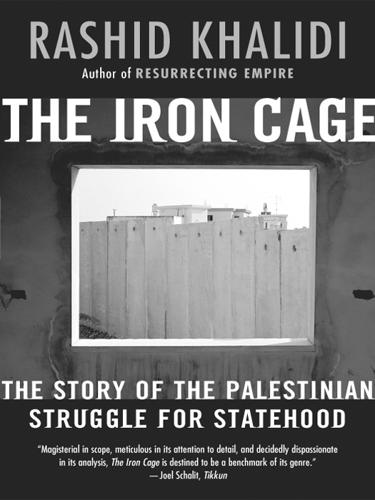
The Iron Cage: The Story of the Palestinian Struggle for Statehood
by
Rashid Khalidi
Published 31 Aug 2006
For a brilliant literary-historical portrait of Lebanon in this era that evocatively shows how the European powers manipulated local identities, see Amin Maalouf’s Rock of Tanios (New York: Brazziler, 1994). 41. For details, see Kamal Salibi, A House of Many Mansions: The History of Lebanon Reconsidered (Berkeley: University of California Press, 1988), and Engin Akarli, The Long Peace: Ottoman Lebanon 1861–1920 (Berkeley: University of California Press, 1993). 42. Provence, The Great Syrian Revolt. 43. What can be seen in the Irish, Indian, Lebanese, and Palestinian examples, among many others, with respect to the manipulation and construction of religious and ethnic identities in order to facilitate domination by an external power, may involve universal processes of indirect control, not confined to the British or other classical colonial powers.
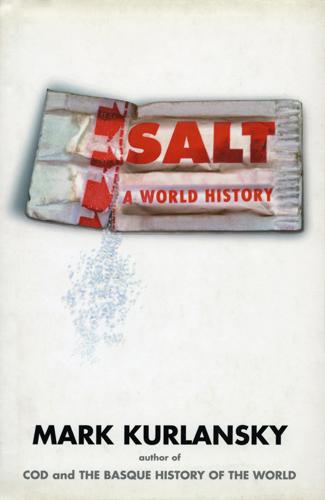
Salt: A World History
by
Mark Kurlansky
Published 28 Jan 2003
Alexandre-Balthazar-Laurent Grimod de La Reynière, the eighteenth-century Frenchman said to be the first food journalist, claimed that cheese was a salty snack for drinking. “For those who need to provoke thirst Roquefort cheese deserves more than any other the epithet of the drunkard’s biscuit.” THE BASQUES LEARNED how to make hams in their long war with the Celts and then learned to market them in their long peace with the ham-loving Romans. Jambon de Bayonne, Bayonne ham, was never made in Bayonne but was shipped from the Basque port of Bayonne at the mouth of the Adour River. It has never been clear, however, if the ham is Basque, though the Basques surprise no one by insisting that it is. Modern France has defined the famous jambon de Bayonne, which was first written about in the sixth century, as a product made in the watershed of the Adour, an area including all of French Basque-land and bits of the neighboring regions of Landes, Béarn, and Bigorre.

Live and Let Spy: BRIXMIS - the Last Cold War Mission
by
Steve Gibson
Published 2 Mar 2012
That Russia no longer targets its nuclear warheads at any of the Nato countries is comforting but irrelevant. Both sides now have sight of, and a voice in, each others decision-making process and most importantly, the first tangible and meaningful effort to introduce trust back into the equation has been taken. This is the end of the Cold War and hopefully the beginning of a ‘long peace’ in Europe. Reflections I have said it before, and I say it again; it is the purest delusion to suppose that because an idea has been handed down from time immemorial to succeeding generations, it may not be entirely false. Pierre Bayle (1647–1706)1 This additional chapter was written in the summer of 2011, some twenty-two years after the iconic fall of the Berlin Wall in November 1989.

Behave: The Biology of Humans at Our Best and Worst
by
Robert M. Sapolsky
Published 1 May 2017
Have People Really Gotten Less Awful? This has been very contentious. Pinker offers the sound bite “We may be living in the most peaceful era in our species’ existence.” The fact most driving this optimism is that, except for the Balkan wars, Europe has been at peace since 1945, the longest stretch in history. For Pinker, this “Long Peace” represents the West coming to its senses after the ruin of World War II, seeing how the advantages of being a common market outweigh those of being a perpetually warring continent, plus some expanding empathy thrown in on the side. Critics characterize this as Eurocentrism. Western countries may kumbaya one another, but they’ve sure made war elsewhere—France in Indochina and Algeria, Britain in Malaya and Kenya, Portugal in Angola and Mozambique, the USSR in Afghanistan, the United States in Vietnam, Korea, and Latin America.
…
Most important, such wars have been made bloodier because the West invented the idea of having client states fight proxy wars for them. After all, the late twentieth century saw the United States and USSR arm the warring Somalia and Ethiopia, only to switch to arming the other side within a few years. The Long Peace has been for Westerners. The claim of violence declining steadily over the last millennium also must accommodate the entire bloody twentieth century. World War II killed 55 million people, more than any conflict in history. Throw in World War I, Stalin, Mao, and the Russian and Chinese civil wars, and you’re up to 130 million.
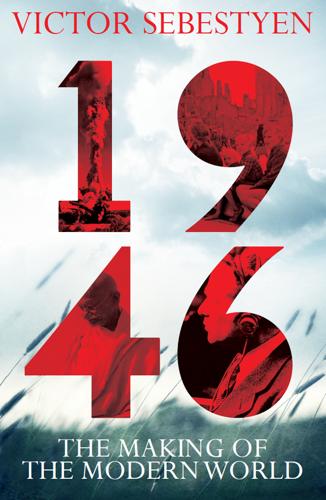
1946: The Making of the Modern World
by
Victor Sebestyen
Published 30 Sep 2014
Flamingo, London, 1998 Furet, François (trans. Deborah Furet), The Passing of an Illusion: The Idea of Communism in the Twentieth Century. Chicago University Press, Chicago, IL, 1999 Gaddis, John, The Cold War. Allen Lane, London, 2006 ———, George Kennan: An American Life. Penguin, New York, 2011 ———, The Long Peace: Inquiries into the History of the Cold War. Oxford University Press, New York, 1984 ———, We Now Know: Rethinking Cold War History. Oxford University Press, London, 1997 Gellately, Robert, Stalin’s Curse: Battling for Communism in War and Cold War. Oxford University Press, Oxford, 2013 Gieseke, Jens (trans.
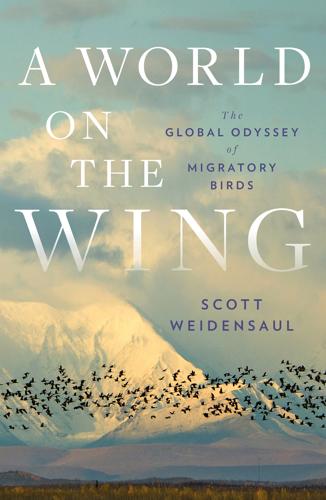
A World on the Wing: The Global Odyssey of Migratory Birds
by
Scott Weidensaul
Published 29 Mar 2021
“Maybe we shouldn’t act so chummy, guys,” I said quietly out of the corner of my mouth, as the seemingly endless photo session continued. “Is there a problem?” Peter asked. “Think, British Army in northern Ireland,” I said under my breath, as his grin crumpled. There is plenty of tension on both sides. Despite a decades-long peace process, the Rifles continue to battle Maoist insurgents that filter across the porous Myanmar border. Just a week or two before our arrival, the Indian military claimed to have killed 40 militants who had crossed the border less than 50 kilometers from the area we were visiting. We finally extricated ourselves, anxious for a chance to clean up and eat a very late breakfast.

Endgame: Bobby Fischer's Remarkable Rise and Fall - From America's Brightest Prodigy to the Edge of Madness
by
Frank Brady
Published 1 Feb 2011
When, on the heels of Harper’s, widely read British magazine Chess published the article in full, Bobby turned livid and screamed: “Those bastards!” Bobby insisted that most of the article had twisted what he said and used his quotes out of context. For example, he never told Ginzburg that he had to “get rid of his mother.” It’s true that Regina Fischer left the apartment to go on a long peace march, met a man, got married, and settled in England. She did say that Bobby, a highly independent adolescent, was probably better off without her living with him; like many mothers, she was doting and continually trying to help her son, sometimes to the point of exasperating him. She and Bobby both realized that living alone gave him more time to study according to his own time and pace, but Ginzburg’s negative interpretation of their relationship was totally incorrect.
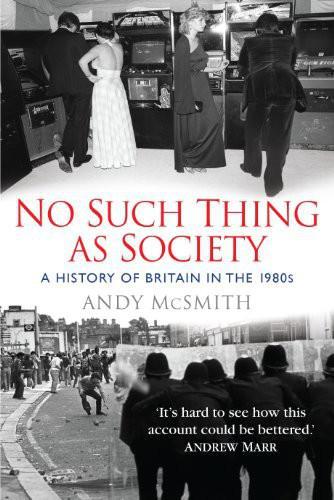
No Such Thing as Society
by
Andy McSmith
Published 19 Nov 2010
It also goes a long way towards explaining the phenomenon of Live Aid, which offered the young a way to be involved in one of the great issues of the time, without being divisive or dull. In 1980, the developed world was cut in two by the military border that ran through Germany, between the communist and capitalist blocs. They had learnt to coexist, but no one knew how long peaceful coexistence could last. The capitalist system was more dynamic and more successful economically than its rival, but once communism took hold of a country, it seemed that nothing could turn it back. No established communist system had ever been dismantled or overthrown from within. People expected this contest between rival systems to continue indefinitely.
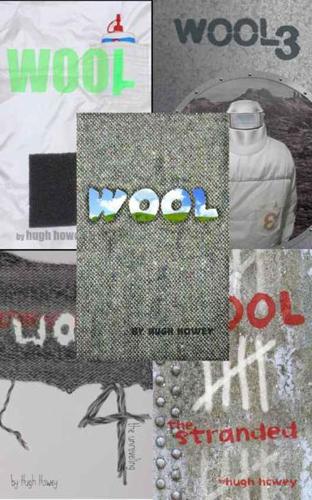
Wool Omnibus Edition
by
Hugh Howey
Published 5 Jun 2012
It startled Knox, this sudden link to a mysterious past. And it wasn’t that terribly long ago, was it? Less than two hundred years? He imagined, if someone lived as long as Jahns had, or McLain for that matter, that three long lives could span that distance. Three handshakes to go from that uprising to this one. And what of the years between? That long peace sandwiched between two wars? Knox lifted his boots from one step to another, thinking on these things. Had he become the bad people he’d learned about in youth? Or had he been lied to? It hurt his head to consider, but here he was, leading a recreation of something awful. And yet it felt so right.
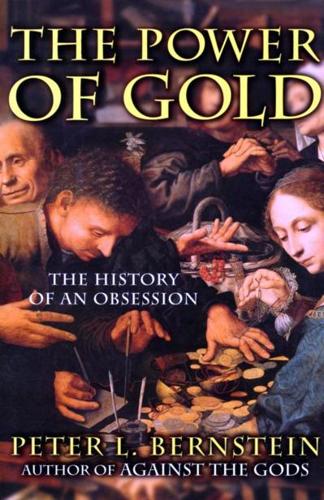
The Power of Gold: The History of an Obsession
by
Peter L. Bernstein
Published 1 Jan 2000
Not a single episode in the history of gold or money recounted so far in this book could have been of much)help. Nothing like the war of 1914-1918 had ever occurred before, in terms of scope, casualties, cost, or pain. It was natural to seek a return to the structure that most people believed had held the world together during the long peace and rising living standards of the Victorian and Edwardian eras, Disraeli's warning notwithstanding. In addition, experience had shown that mistrust in the value of money can have a powerful and destructive impact on social structures, the established order of property ownership, and economic progress.
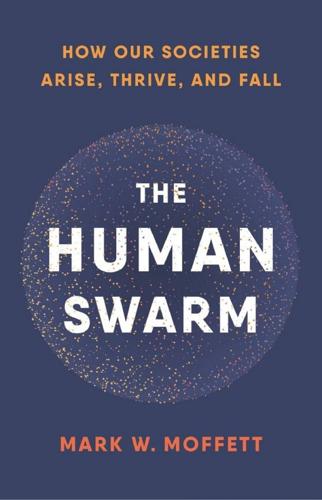
The Human Swarm: How Our Societies Arise, Thrive, and Fall
by
Mark W. Moffett
Published 31 Mar 2019
Minoa, a Bronze Age civilization on the island of Crete, was renowned for a tranquil culture of merchants and artisans.15 Yet even the population of Minoa, serene in its heyday, must have come together, in this case before historical records, by force. The same is true of the modern-day people of such long-peaceful states as Luxembourg and Iceland, when their history is traced back far enough. Just as chiefdoms swallowed tribes and then each other, the pattern of the expansion of the nations and empires that ensued stayed the same. Throughout recorded history conquering was followed by consolidation and control, repeated ad infinitum.
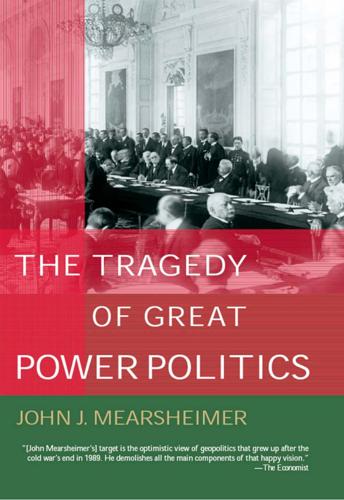
The Tragedy of Great Power Politics
by
John J. Mearsheimer
Published 1 Jan 2001
But the United States did not fight to make peace in either world war. Instead, it fought to prevent a dangerous foe from achieving regional hegemony. Peace was a welcome byproduct of those endeavors. The same basic point holds for the Cold War: American military forces were in Europe to contain the Soviet Union, not to maintain peace. The long peace that ensued was the happy consequence of a successful deterrence policy. We find a similiar story in Northeast Asia. The United States did not intervene with force to shut down the Russo-Japanese War (1904–5), nor did it send troops to Northeast Asia in the 1930s, when Japan took the offensive on the Asian mainland, conquering Manchuria and large portions of China in a series of brutal military campaigns.

The Story of Philosophy
by
Will Durant
Published 23 Jul 2012
“There be three points of business” in government: “the preparation; the debate or examination; and the perfection” (or execution). “Whereof, if you look for dispatch, let the middle only be the work of many, and the first and last the work of a few.”37 He is an outspoken militarist; he deplores the growth of industry as unfitting men for war, and bewails long peace as lulling the warrior in man. Nevertheless, he recognizes the importance of raw materials: “Solon said well to Crœsus (when in ostentation Crœsus showed him his gold), ‘Sir, if any other come that hath better iron than you, he will be master of all this gold.’”38 Like Aristotle, he has some advice on avoiding revolutions.
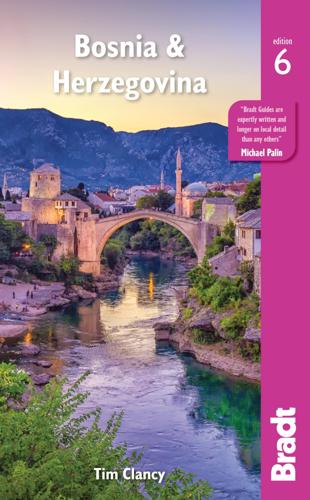
Bosnia and Herzegovina
by
Tim. Clancy
Published 15 Mar 2022
Uprisings were more frequent in the 18th century, and in order to appease many of the internal opposing forces, both Muslim and Christian, the Ottomans granted certain freedoms. The old Orthodox church was renovated in 1833 and a Catholic church was constructed in 1864. Despite occasional social unrest, Mostar continued to enjoy a long, peaceful period of cultural, political and economic growth. All three religious communities lived in harmony. Muslims obviously enjoyed more freedoms and tax breaks but the survival and growth of the Christian communities indicates that the Turks had a fairly high level of tolerance towards the Christian population, particularly in the first two centuries of rule.
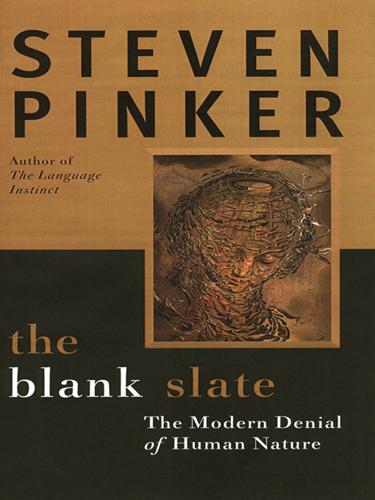
The Blank Slate: The Modern Denial of Human Nature
by
Steven Pinker
Published 1 Jan 2002
See also Murray’s afterword in the 1996 paperback edition. 54.Gigerenzer & Selten, 2001; Jones, 2001; Kahneman & Tversky, 1984; Thaler, 1994; Tversky & Kahneman, 1974. 55.Akerlof, 1984; Daly & Wilson, 1994; Jones, 2001; Rogers, 1994. 56.Frank, 1999; Frank, 1985. 57.Bowles & Gintis, 1998; Bowles & Gintis, 1999. 58.Gintis, 2000. 59.Wilkinson, 2000. 60.Daly & Wilson, 1988; Daly, Wilson, & Vasdev, 2001; Wilson & Daly, 1997. Chapter 17: Violence 1.Quoted by R. Cooper in “The long peace,” Prospect, April 1999. 2.National Defense Council Foundation, Alexandria, Va., www.ndcf.org/index.htm. 3.Bamforth, 1994; Chagnon, 1996; Daly & Wilson, 1988; Ember, 1978; Ghiglieri, 1999; Gibbons, 1997; Keeley, 1996; Kingdon, 1993; Knauft, 1987; Krech, 1994; Krech, 1999; Wrangham & Peterson, 1996. 4.Keeley, 1996; Walker, 2001. 5.Gibbons, 1997; Holden, 2000. 6.Fernández-Jalvo et al., 1996. 7.FBI Uniform Crime Reports 1999: www.fbi.gov/ucr/99cius.htm. 8.Seville, 1990. 9.Ortega y Gasset, 1932/1985, epilogue. 10.New York Times, June 13, 1999. 11.Paul Billings, quoted in B.
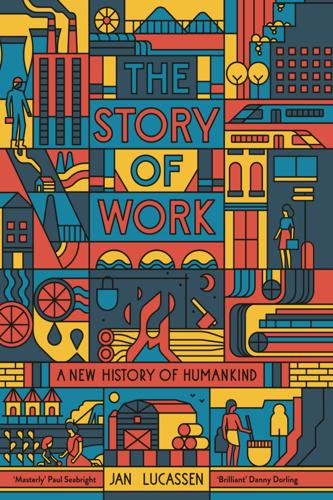
The Story of Work: A New History of Humankind
by
Jan Lucassen
Published 26 Jul 2021
In time free from farming, men make rope and rush mats and other articles by hand; and women work in the salt fields from the third to the eighth month and during the rest of the year devote themselves exclusively to weaving cotton cloth, not even taking time to cut firewood and gather grass for compost [traditional female work].10 The importance of non-agricultural production in the countryside follows on from the assertion that it accounted for 40 to 50 per cent of regional production, although ‘farmers’ comprised around 90 per cent of the population of each domain.11 It is no coincidence that this labour-intensive path of economic development surged in Tokugawa Japan. After centuries of civil wars, two key political changes occurred with direct consequences for working Japan. Firstly, the Samurai were now concentrated in cities under direct supervision of the government. This initiated a period of centuries-long peace, but also of rapid urbanization. In 1600, only 3 per cent of the population lived in cities of more than 10,000 residents; 50 years later, this was already more than 13 per cent, and in 1700, 15 per cent. Some of these cities were very large: Edo (Tokyo), the seat of the government, had a million inhabitants; Osaka and Kyoto each had half a million; and several provincial cities recorded 100,000 residents.

Chokepoints: American Power in the Age of Economic Warfare
by
Edward Fishman
Published 25 Feb 2025
Friedman, The Lexus and the Olive Tree: Understanding Globalization (New York: Picador, 2000), 248–275. GO TO NOTE REFERENCE IN TEXT the realm of “soft power”: See Joseph S. Nye, Jr., Soft Power: The Means to Success in World Politics (New York: PublicAffairs, 2005). GO TO NOTE REFERENCE IN TEXT by “mutual independence”: John Lewis Gaddis, “The Long Peace: Elements of Stability in the Postwar International System,” International Security 10, no. 4 (1986): 112, doi.org/10.2307/2538951. GO TO NOTE REFERENCE IN TEXT Globalization’s triumphant march first slowed: Shekhar Aiyar and Anna Ilyina, “Charting Globalization’s Turn to Slowbalization after Global Financial Crisis,” IMF Blog, International Monetary Fund, February 8, 2023, www.imf.org/en/Blogs/Articles/2023/02/08/charting-globalizations-turn-to-slowbalization-after-global-financial-crisis; David H.

The Atlantic and Its Enemies: A History of the Cold War
by
Norman Stone
Published 15 Feb 2010
As a general account of the Cold War, I have mainly used a splendid French account, Georges-Henri Soutou’s La Guerre de Cinquante Ans (2001), but another French book, André Fontaine’s Après eux le Déluge, de Kaboul à Sarajevo (1995), covers the last decade or so of Communism, very readably. John Lewis Gaddis, The Cold War (2005), is a very efficient survey, and his The Long Peace (1987) bears re-reading, but see also David Reynolds, One World Divisible (2000). The world of arms negotiations was covered in admirable and dogged fashion by Don Oberdorfer, From the Cold War to a New Era (1998). For the world of 1945, Tony Judt, Postwar (2005), and William I. Hitchcock, The Struggle for Europe (2003), complement each other.
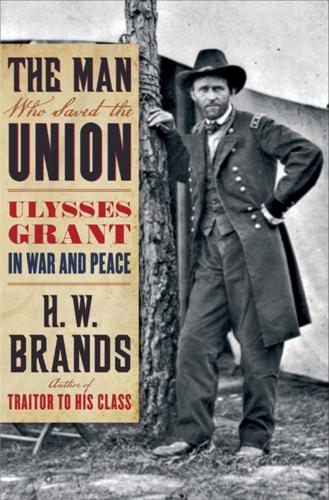
The Man Who Saved the Union: Ulysses Grant in War and Peace
by
H. W. Brands
Published 1 Oct 2012
A great commander like Sherman or Sheridan even then might have organized and put down the rebellion in six months or a year, or at the farthest two years. But that would have saved slavery, perhaps, and slavery meant the germs of a new rebellion. There had to be an end to slavery.” “It was a long war, and a great work well done. I suppose it means a long peace.” “I believe so.” Grant had left America in part to give Hayes the opportunity to establish his own presidency. “I propose to stay away till after the exciting scenes that will surround the test of Mr. Hayes’s policy, for the reason that if I were at home I would be charged with having a hand in every kind of political maneuvering,” he told William Copeland, a colleague of John Young’s at the New York Herald.

The Great Sea: A Human History of the Mediterranean
by
David Abulafia
Published 4 May 2011
If these were sacred islands, part of their sacredness must have consisted in a rule that they were unapproachable, inhabited only by native Maltese in the service of the Great Goddess, who was represented not just in the statues and figurines the Maltese carved, but in the very shape of the temples, with their billowing exterior and womb-like internal passages. The end of this culture is as perplexing as its creation. The long peace came to an end by the middle of the sixteenth century BC. There is no sign of a decline in the temple culture; rather, there was a sharp break, as invaders arrived, lacking the skills that had created the great monuments, but possessing one advantage: bronze weapons. Judging from finds of clay whorls and of carbonized cloth, they were spinners and weavers, who arrived from Sicily and south-eastern Italy.16 By the fourteenth century they had been replaced by another wave of Sicilian settlers.

Presidents of War
by
Michael Beschloss
Published 8 Oct 2018
Businessmen who backed McKinley for President in 1896 implored him to do something to stop the uncertainty about Cuba, where there was about $50 million (about $1.5 billion today) of American investment. In March 1897, on the night before McKinley’s inauguration, the departing President, Grover Cleveland, warned him that within the next two years, he would inevitably be hauled into war with Spain. McKinley did not wish to end the nation’s long peace since Appomattox. Trying to fix the Cuba problem, he offered to buy the island, but the Spanish turned him down flat. McKinley sent a personal envoy, his friend William Calhoun of Illinois, to Weyler’s Cuba. Calhoun reported back that the island was “wrapped in the stillness of death and the silence of desolation.”

The Rise and Fall of the Great Powers: Economic Change and Military Conflict From 1500 to 2000
by
Paul Kennedy
Published 15 Jan 1989
And, as the preceding chapter showed, the British government had long known how to exploit its credit in the banking and stock markets. But developments in the financial realm by the mid-nineteenth century were both qualitatively and quantitatively different from what had gone before. At first sight, it is the quantitative difference which catches the eye. The long peace and the easy availability of capital in the United Kingdom, together with the improvements in the country’s financial institutions, stimulated Britons to invest abroad as never before: the £6 million or so which was annually exported in the decade following Waterloo had risen to over £30 million a year by midcentury, and to a staggering £75 million a year between 1870 and 1875.

Kissinger: A Biography
by
Walter Isaacson
Published 26 Sep 2005
Cambridge: Harvard University Press, 1948. ———, ed. The Philosophy of Kant (includes “Perpetual Peace”). New York: Random House, 1949. Frost, David. I Gave Them a Sword. New York: Morrow, 1978. Frye, Alton. A Responsible Congress: The Politics of National Security. New York: McGraw-Hill, 1975. Gaddis, John Lewis. The Long Peace. New York: Oxford, 1987. ———. Strategies of Containment. New York: Oxford, 1982. Garthoff, Raymond. Détente and Confrontation. Washington: Brookings, 1985. Gelb, Leslie, and Richard Betts. The Irony of Vietnam: The System Worked. Washington: Brookings, 1979. Gentry, Curt. J. Edgar Hoover. New York: Norton, 1991.

The Rough Guide to France (Travel Guide eBook)
by
Rough Guides
Published 1 Aug 2019
With tables spread across a flowery courtyard, the restaurant (closed Mon) serves a great-value €25 menu. Closed Oct to mid-Feb. €72 Restaurant Philip Chemin de la Fontaine 04 90 20 31 81. Gorgeous riverside spot, en route to the spring. At the very least, it’s worth enjoying a quick drink on the bar section of its long, peaceful terrace, but the food is good too, with full menus starting at €30. Daily: Easter to mid-June & Sept noon–5pm; mid-June to Aug noon–9pm. L’Hôtel du Poète 04 90 20 34 05, hoteldupoete.com. Despite its uninspiring exterior, this former watermill, just outside the village below the main D25 on the river’s north bank, offers luxurious accommodation, with large, comfortable rooms and a pool, but no restaurant.
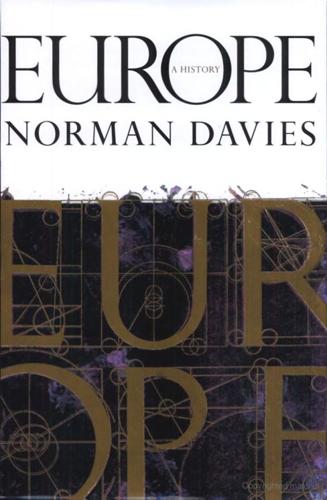
Europe: A History
by
Norman Davies
Published 1 Jan 1996
Only in the 1990s, with Germany reunited and the Soviet empire in a state of collapse, could the people of Europe resume the natural course of their development so rudely interrupted in that beautiful summer of 1914. In this scenario, therefore, the years between 1914 and 1945 appear as the time of Europe’s troubles, which filled the space between the long peace of the late nineteenth century and the still longer peace of the ‘Cold War’. They may be likened to the slipping of a continental plate, and to the resultant season of earthquakes. They encompass the initial military quakes of 1914–18, the collapse of four empires, the outbreak of communist revolution in Russia, the emergence of a dozen new sovereign states, the armed truce of the inter-war decades, the fascist take-overs in Italy, Germany, and Spain, and then the second, general military conflagration of 1939–45.